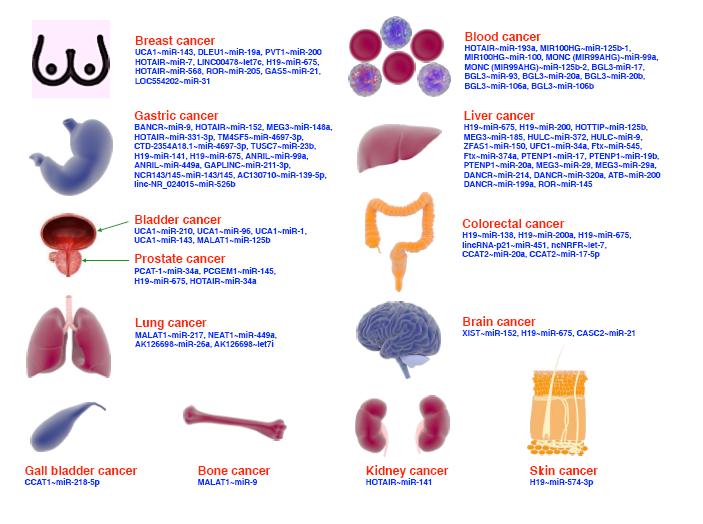| 1. |
Hazeltine MD, Guber RD, Buettner H, et al. Venous thromboembolism risk stratification in trauma using the caprini risk assessment model. Thromb Res, 2021, 208: 52-57.
|
| 2. |
Jayasakoon K, Punyashthira A, Somboon B, et al. Gynecologic malignancy-associated venous thromboembolism and predictive tool at Thammasat University hospital. Asian Pac J Cancer Prev, 2022, 23(6): 2113-2118.
|
| 3. |
Sun H, Xue S, Huang Y, et al. Stratifying the risks of venous thromboembolism in the lateral skull base surgery using Caprini risk assessment model. Eur Arch Otorhinolaryngol, 2023, 280(7): 3219-3228.
|
| 4. |
Wu SS, Raymer C, Schafer R, et al. Incidence of venous thromboembolism based on Caprini score in deep inferior epigastric perforator flap breast reconstruction. J Reconstr Microsurg, 2023, 39(9): 705-714.
|
| 5. |
Wang M, Zhang G, Chen J, et al. Current prevalence of perioperative early venous thromboembolism and risk factors in Chinese adult patients with inguinal hernia (CHAT-1). Sci Rep, 2020, 10(1): 12667. doi: 10.1038/s41598-020-69453-6.
|
| 6. |
Lu X, Zeng W, Zhu L, et al. Application of the Caprini risk assessment model for deep vein thrombosis among patients undergoing laparoscopic surgery for colorectal cancer. Medicine (Baltimore), 2021, 100(4): e24479. doi: 10.1097/MD.0000000000024479.
|
| 7. |
Chen Q, Cai Y, Zhang Z, et al. Prevalence of venous thromboembolism and evaluation of a modified caprini risk assessment model: a single-centre, prospective cohort study involving patients undergoing lung resections for bronchiectasis. Thromb J, 2022, 20(1): 43. doi: 10.1186/s12959-022-00402-1.
|
| 8. |
Halaby R, Popma CJ, Cohen A, et al. D-dimer elevation and adverse outcomes. J Thromb Thrombolysis, 2015, 39(1): 55-59.
|
| 9. |
Xiong W, Zhao Y, Cheng Y, et al. Comparison of VTE risk scores in guidelines for VTE diagnosis in nonsurgical hospitalized patients with suspected VTE. Thromb J, 2023, 21(1): 8. doi: 10.1186/s12959-023-00450-1.
|
| 10. |
Hansen ES, Rinde FB, Edvardsen MS, et al. Elevated plasma D-dimer levels are associated with risk of future incident venous thromboembolism. Thromb Res, 2021, 208: 121-126.
|
| 11. |
Xu Y, Khan F, Kovacs MJ, et al. Serial D-dimers after anticoagulant cessation in unprovoked venous thromboembolism: data from the REVERSE cohort study. Thromb Res, 2023, 231: 32-38.
|
| 12. |
Ritch JMB, Kim JH, Lewin SN, et al. Venous thromboembolism and use of prophylaxis among women undergoing laparoscopic hysterectomy. Obstet Gynecol, 2011, 117(6): 1367-1374.
|
| 13. |
Gundogdu RH, Oduncu M, Bozkirli BO, et al. Does thromboprophylaxis cause bleeding after laparoscopic cholecystectomy?. Bratisl Lek Listy, 2017, 118(3): 156-159.
|
| 14. |
Anderson DR, Morgano GP, Bennett C, et al. American society of hematology 2019 guidelines for management of venous thromboembolism: prevention of venous thromboembolism in surgical hospitalized patients. Blood Adv, 2019, 3(23): 3898-3944.
|
| 15. |
Nguyen NT, Hinojosa MW, Fayad C, et al. Laparoscopic surgery is associated with a lower incidence of venous thromboembolism compared with open surgery. Ann Surg, 2007, 246(6): 1021-1027.
|
| 16. |
Güleç B, Oner K, Yigitler C, et al. Lower extremity venous changes in pneumoperitoneum during laparoscopic surgery. ANZ J Surg, 2006, 76(10): 904-906.
|
| 17. |
Sharma A, Dahiya D, Kaman L, et al. Effect of various pneumoperitoneum pressures on femoral vein hemodynamics during laparoscopic cholecystectomy. Updates Surg, 2016, 68(2): 163-169.
|
| 18. |
Yang C, Zhu L. Coagulation and deep vein flow changes following laparoscopic total extraperitoneal inguinal hernia repair: a single-center, prospective cohort study. Surg Endosc, 2019, 33(12): 4057-4065.
|
| 19. |
Kano D, Hu C, Thornley CJ, et al. Risk factors associated with venous thromboembolism in laparoscopic surgery in non-obese patients with benign disease. Surg Endosc, 2023, 37(1): 592-606.
|
| 20. |
Pannucci CJ, Barta RJ, Portschy PR, et al. Assessment of postoperative venous thromboembolism risk in plastic surgery patients using the 2005 and 2010 caprini risk score. Plast Reconstr Surg, 2012, 130(2): 343-353.
|
| 21. |
Pannucci CJ, Swistun L, MacDonald JK, et al. Individualized venous thromboembolism risk stratification using the 2005 caprini score to identify the benefits and harms of chemoprophylaxis in surgical patients: a meta-analysis. Ann Surg, 2017, 265(6): 1094-1103.
|
| 22. |
Bo H, Li Y, Liu G, et al. Assessing the risk for development of deep vein thrombosis among Chinese patients using the 2010 caprini risk assessment model: a prospective multicenter study. J Atheroscler Thromb, 2020, 27(8): 801-808.
|
| 23. |
Jorgensen EM, Li A, Modest AM, et al. Incidence of venous thromboembolism after different modes of gynecologic surgery. Obstet Gynecol, 2018, 132(5): 1275-1284.
|
| 24. |
Obi AT, Pannucci CJ, Nackashi A, et al. Validation of the caprini venous thromboembolism risk assessment model in critically Ⅲ surgical patients. JAMA Surg, 2015, 150(10): 941-948.
|
| 25. |
Zhang W, Sun R, Hu X, et al. Caprini risk assessment model combined with D-dimer to predict the occurrence of deep vein thrombosis and guide intervention after laparoscopic radical resection of colorectal cancer. World J Surg Oncol, 2023, 21(1): 299. doi: 10.1186/s12957-023-03183-7.
|
| 26. |
Dong H, Liang X, Gao Y, et al. Postoperative venous thromboembolism after surgery for stage Ⅰ A non-small-cell lung cancer: a single-center, prospective cohort study. Thorac Cancer, 2022, 13(9): 1258-1266.
|
| 27. |
Tongta S, Angsnuntsukh C, Saisongcroh T, et al. Deep vein thrombosis screening in pediatric orthopedic patients. Front Surg, 2023, 10: 1041578. doi: 10.3389/fsurg.2023.1041578.
|
| 28. |
Richardson W, Apelgren K, Earle D, et al. Guidelines for deep venous thrombosis prophylaxis during laparoscopic surgery. Surg Endosc, 2007, 21(12): 2331-2334.
|
| 29. |
Qadan M, Polk HC, Hohmann SF, et al. A reassessment of needs and practice patterns in pharmacologic prophylaxis of venous thromboembolism following elective major surgery. Ann Surg, 2011, 253(2): 215-220.
|
| 30. |
Goh J, Mackay S. Risk of bleeding associated with use of systemic thromboembolic prophylaxis during laparoscopic cholecystectomy (Br J Surg 2012: 99: 979-986). Br J Surg, 2013, 100(4): 575. doi: 10.1002/bjs.9081.
|
| 31. |
Geersing GJ, Toll DB, Janssen KJ, et al. Diagnostic accuracy and user-friendliness of 5 point-of-care D-dimer tests for the exclusion of deep vein thrombosis. Clin Chem, 2010, 56(11): 1758-1766.
|
| 32. |
Johnson ED, Schell JC, Rodgers GM. The D-dimer assay. Am J Hematol, 2019, 94(7): 833-839.
|
| 33. |
Naymagon L, Zubizarreta N, Feld J, et al. Admission D-dimer levels, D-dimer trends, and outcomes in COVID-19. Thromb Res, 2020, 196: 99-105.
|
| 34. |
朱兵, 田广磊, 戈小虎. 血浆D-二聚体检测与彩色多普勒超声在下肢深静脉血栓诊断中的临床意义. 中国普外基础与临床杂志, 2010, 17(7): 668-671.
|
| 35. |
Becattini C, Rondelli F, Vedovati MC, et al. Incidence and risk factors for venous thromboembolism after laparoscopic surgery for colorectal cancer. Haematologica, 2015, 100(1): e35-e38.
|
| 36. |
Pai A, Hurtuk MG, Park JJ, et al. A randomized study on 1-week versus 4-week prophylaxis for venous thromboembolism after laparoscopic surgery for colorectal cancer. Ann Surg, 2016, 263(4): e62. doi: 10.1097/SLA.0000000000000901.
|
| 37. |
Farge D, Frere C, Connors JM, et al. 2022 international clinical practice guidelines for the treatment and prophylaxis of venous thromboembolism in patients with cancer, including patients with COVID-19. Lancet Oncol, 2022, 23(7): e334-e347. doi: 10.1016/S1470-2045(22)00160-7.
|
| 38. |
Avnery O, Martin M, Bura-Riviere A, et al. D-dimer levels and risk of recurrence following provoked venous thromboembolism: findings from the RIETE registry. J Intern Med, 2020, 287(1): 32-41.
|
| 39. |
Tian Q, Li M. Risk factors of deep vein thrombosis of lower extremity in patients undergone gynecological laparoscopic surgery: what should we care. BMC Womens Health, 2021, 21(1): 130. doi: 10.1186/s12905-021-01276-7.
|
| 40. |
Wu D, Gu H, Tang Y, et al. Predictive factors on postoperative venous thromboembolism after minimally invasive colorectal cancer surgery: a retrospective observational study. BMC Surg, 2023, 23(1): 85. doi: 10.1186/s12893-023-01992-x.
|
| 41. |
Liu H, Li L, Zhao Z. Values of caprini risk assessment scale and D-dimer for predicting venous thromboembolism during puerperium. Int J Womens Health, 2024, 16: 47-53.
|
| 42. |
Ding Y, Yao L, Tan T, et al. Risk assessment for postoperative venous thromboembolism using the modified caprini risk assessment model in lung cancer. J Thorac Dis, 2023, 15(6): 3386-3396.
|
| 43. |
Wang P, Yang Y, Zheng L, et al. The predicted value for venous thromboembolism based on a modified model of caprini combined with fasting blood glucose and D-dimer: a retrospective study. BMC Musculoskelet Disord, 2025, 26(1): 130. doi: 10.1186/s12891-024-08133-2.
|
| 44. |
代玲玉, 赵红乐, 赵广芳, 等. Caprini评分联合D-二聚体诊断妇科恶性肿瘤深静脉血栓形成的价值. 中国医药导报, 2020, 17(2): 85-88.
|
| 45. |
Shi J, Ye J, Zhuang X, et al. Application value of caprini risk assessment model and elevated tumor-specific D-dimer level in predicting postoperative venous thromboembolism for patients undergoing surgery of gynecologic malignancies. J Obstet Gynaecol Res, 2019, 45(3): 657-664.
|
| 46. |
Wang H, Lv B, Li W, et al. Diagnostic performance of the caprini risk assessment model combined with D-dimer for preoperative deep vein thrombosis in patients with thoracolumbar fractures caused by high-energy injuries. World Neurosurg, 2022, 157: e410-e416. doi: 10.1016/j.wneu.2021.10.106.
|
| 47. |
Zeng H, Gao M, Chen J, et al. Incidence and risk factors of venous thromboembolism after percutaneous nephrolithotomy: a single-center experience. World J Urol, 2021, 39(9): 3571-3577.
|
| 48. |
Lewis GK, Spaulding AC, Brennan E, et al. Caprini assessment utilization and impact on patient safety in gynecologic surgery. Archives of Gynecology and Obstetrics, 2023, 308(3): 901-912.
|
| 49. |
Elmoamly S, Mattar M, Yacoub MF, et al. Can biomarkers of coagulation, platelet activation, and inflammation predict venous thromboembolism in patients with haematological malignancies?. Acta Haematol, 2019, 141(4): 245-253.
|
| 50. |
Costa J, Araújo A. Cancer-related venous thromboembolism: from pathogenesis to risk assessment. Semin Thromb Hemost, 2021, 47(6): 669-676.
|
| 51. |
Ramli NN, Iberahim S, Mohd Noor NH, et al. Haemostasis and inflammatory parameters as potential diagnostic biomarkers for VTE in trauma-immobilized patients. Diagnostics (Basel), 2023, 13(1): 150. doi: 10.3390/diagnostics13010150.
|
| 52. |
Huang X, Zhou S, Ma X, et al. Effectiveness of an artificial intelligence clinical assistant decision support system to improve the incidence of hospital-associated venous thromboembolism: a prospective, randomised controlled study. BMJ Open Qual, 2023, 12(4): e002267. doi: 10.1136/bmjoq-2023-002267.
|
| 53. |
Lam BD, Dodge LE, Zerbey S, et al. The potential use of artificial intelligence for venous thromboembolism prophylaxis and management: clinician and healthcare informatician perspectives. Sci Rep, 2024, 14(1): 12010. doi: 10.1038/s41598-024-62535-9.
|




